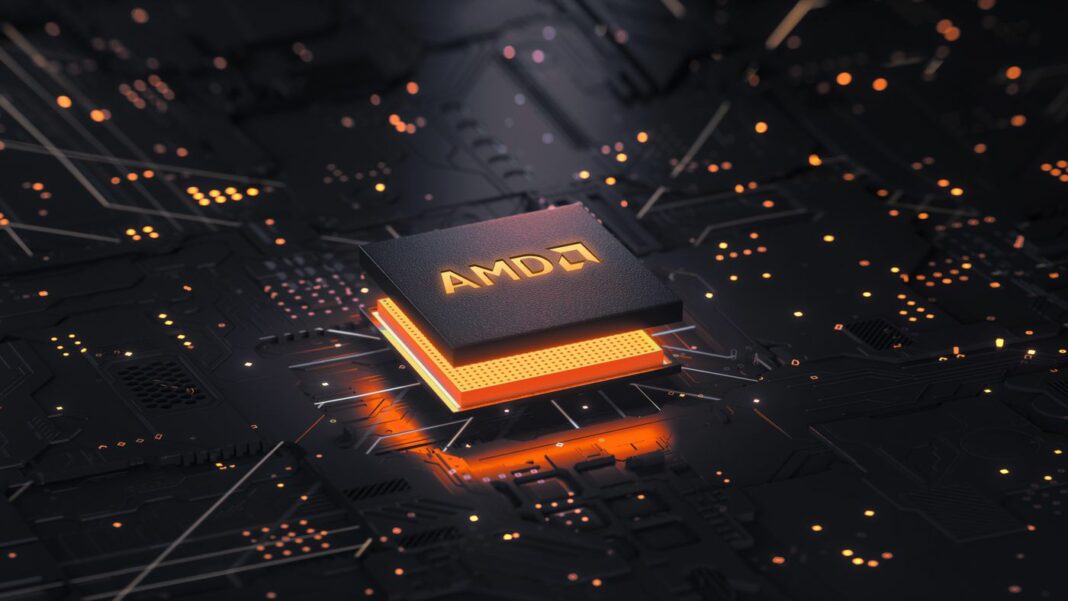After many rumors, AMD made official at a conference at CES 2022 the Ryzen 6000 processor family for notebooks. In addition to being the company’s first mobile chips to surpass the 5.0 GHz barrier, the news draws attention as they finally abandon Vega integrated graphics in favor of solutions based on the new RDNA 2 microarchitecture.
Ryzen 6000 for notebooks brings Zen 3+ cores at 5.0 GHz
As usual, the Ryzen 6000 line is split between the high-performance H-series, aimed at gaming and professional notebooks with power consumption between 35 W and 45 W, and the low-power U-series, dedicated to ultrabooks in versions from 15 W to 28 W.
Interestingly, the company maintained the chip blending strategy already seen in Ryzen 5000 chips — the Ryzen 3 5425U, Ryzen 5 5625U, and Ryzen 7 5825U models are revised versions of components from the previous generation, only receiving higher clock rates. The good news is that this generation completely abandons models without Simultaneous Multi-Threading (SMT), the technology that allows the use of two threads per core.
Want to catch up on the best tech news of the day? Access and subscribe to our new youtube channel, Kenyannews News. Every day a summary of the main news from the tech world for you!
The entire H-series and the most powerful components of the U-series are based on the new Zen 3+ microarchitecture, refined version of the Zen 3 now manufactured in the 6nm process. The change allowed AMD to raise processor clocks to a new level, reaching 5.0 GHz boost on the top of the line, the Ryzen 9 6980HX.
In practice, the giant promises gains of up to 30% in processing and 40% in energy efficiency, with bold numbers of autonomy, which would reach up to 24 hours of video playback. Among those responsible for the gains are changes such as several new power management features and 6nm lithography.
RDNA 2 GPUs up to 100% more powerful than Vega graphics
The biggest and most awaited news, however, is the debut of RDNA 2 integrated graphics, technology coming directly from Radeon RX 6000 cards and next-gen consoles. There will be two configurations: Navi 6, with 6 Computational Units (CUs) and 384 cores, and Navi 12, with 12 CUs and 768 cores. The clocks are also impressive and reach 2.4 GHz, unprecedented numbers for iGPUs.
An interesting point to highlight is that the Navi 12 features similar configurations to the recently announced Radeon RX 6300M, the company’s dedicated entry-level GPU. The differences lie in clocks and memories: even if it reaches higher speeds, the integrated solution will be limited to DDR5 memories, while the RX 6300M will have access to its own GDDR6 RAM.
Still, AMD promises 100% jumps over the Vega 8 used in Ryzen 5000 mobile APUs, as rumors indicated, leaving behind Iris Xe present in rival Intel Core i7 1165G7 and managing to offer competitive performance enough to face dedicated GPUs like the Nvidia GeForce MX 450 — the advantages of RDNA 2 graphics can reach up to 303% in games like DOOM Eternal, according to the company.
Another big highlight of the novelty is the presence of hardware-accelerated Ray Tracing, making the Ryzen 6000 chips the first APUs on the market to feature the feature. To guarantee good performance even in the heaviest games, the solution is compatible with FidelityFX Super Resolution (FSR), the spatial upscaling competitor to DLSS, which promises to recover up to 56% of performance in titles like Call of Duty: Vanguard.
The new iGPUs also come with a host of advanced new features, including HDR content processing, display synchronization with AMD FreeSync, HDMI 2.1 and DisplayPort 2.0 connections for high-resolution displays with high refresh rates, and compatibility with the new AV1 codec, which promises to play an important role at the level of traditional H.264 in the future.
Chips support DDR5 RAM, USB 4, Wi-Fi 6E and more
The launches also had the connectivity and security features supercharged, following Intel in employing support for DDR5 and LPDDR5 memories, Wi-Fi 6E and Bluetooth 5.2, in addition to finally receiving the PCI-E 4.0 bus, one of the points where the Ryzen chips mobile were out of date. The technology now allows laptops with AMD hardware to access SSDs with speeds above 7 GB/s, for example.
The company makes processors even more attractive to professionals and enthusiasts with the addition of USB 4 connections, with transfer rates of up to 40 Gbps, the same speed delivered by Thunderbolt 4 ports. hardware security, making the Ryzen 6000 the first processors to adopt the new in PCs.
